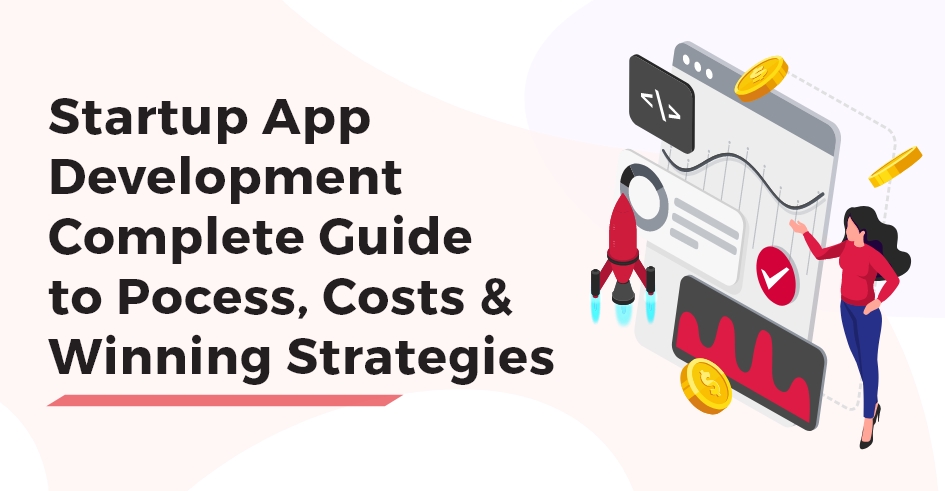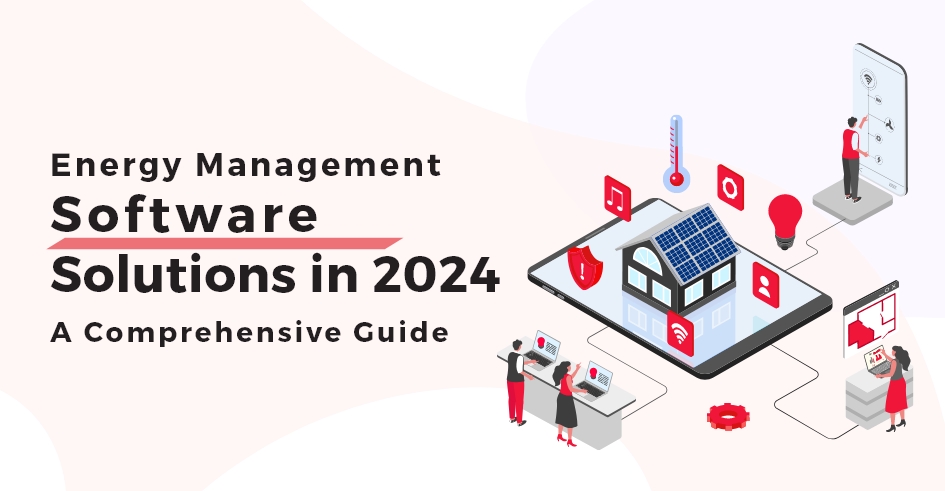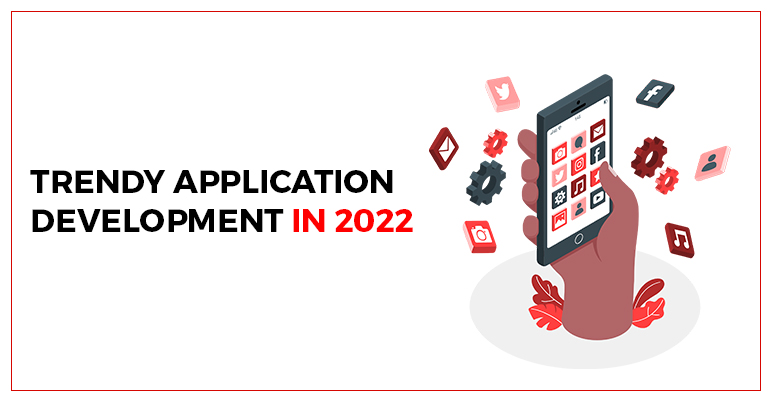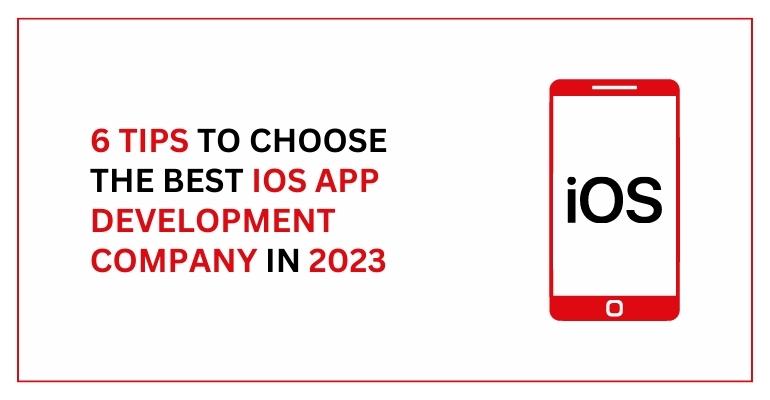In 2025, over 70% of startups are prioritizing mobile apps as their primary channel for customer acquisition, engagement, and revenue growth. Mobile apps generated over $935 billion in revenue globally in 2024 — a number projected to surge even higher this year. It’s clear: if you’re launching a startup, a high-performing mobile app isn’t optional — it’s essential for survival and scale.
This guide covers everything you need to know about startup app development:
- A clear, step-by-step look at the development process
- Realistic insights into cost and budget planning
- Proven strategies to build scalable apps
- Critical post-launch advice for long-term success
Whether you’re a founder, part of a startup team, or an early-stage entrepreneur, this guide is designed to arm you with actionable insights.
This blog covers every aspect of startup app development: offering real-world cost breakdowns, scalable growth strategies, and practical advice to help you navigate app development from idea to launch — and beyond.
Startup App Development Process: Step-by-Step
Developing a successful app for your startup isn’t luck — it’s a system. Here’s the complete startup app development process, broken down clearly:
1. Idea Validation & Market Research
Before writing a single line of code, validate your app idea. 42% of startups fail because there’s no market need.
Use proven tools like:
- MVP surveys (Google Forms, Typeform)
- Competitor analysis (SimilarWeb, App Annie)
- Trend research (Google Trends, Product Hunt)
Focus on defining a core problem-solution fit — one major pain point your app will solve better than existing alternatives.
2. Feature Planning & Prioritization
Avoid bloated first releases. Divide features into:
- Must-haves: Core functions your app can’t live without.
- Nice-to-haves: Future upgrades after user validation.
A lean MVP (Minimum Viable Product) should deliver only the essential value, helping you test assumptions without draining resources.
3. UI/UX Design
Startups must prioritize user flows — how users move through the app — before obsessing over visual design.
- Wireframing: Figma, Balsamiq
- Prototyping: InVision, Adobe XD
Focus on intuitive navigation and frictionless user experience. A beautiful app that confuses users will fail.
4. Choosing the Right Tech Stack
Selecting the right technology stack is a critical decision that directly impacts your app’s performance, scalability, and development cost. A reliable ios or Android app development company will guide you through these options based on your goals and budget:
- Native Development: Offers the best performance and user experience by using platform-specific languages like Kotlin for Android and Swift for iOS. Ideal for complex apps but comes with higher development costs.
- Cross-Platform Development: Tools like Flutter and React Native allow you to build apps for both Android and iOS using a single codebase. This is a smart choice for early-stage startups seeking faster time-to-market and reduced costs.
To ensure long-term success, it’s essential to plan for scalability from day one. A seasoned development partner will help you select a backend solution—like Node.js or Firebase—that can easily grow with your user base.
5. Development Phase
Use Agile sprints to build iteratively — small releases, fast feedback.
- Frontend: What users interact with (UI, animations)
- Backend: Servers, databases, API integrations
A modular approach ensures you can pivot or scale based on early user feedback without overhauling everything.
6. Testing & QA
Testing is non-negotiable:
- Manual testing: For user experience, design flaws.
- Automated testing: For performance, security, crash detection.
Integrate user feedback loops during private beta phases to catch problems before public launch.
7. Launch & Deployment
Follow best practices for launching on App Store and Google Play:
- Optimize your app title, description, and keywords (App Store Optimization – ASO)
- Prepare screenshots, demo videos, and a strong app pitch.
- Run beta testing programs (like TestFlight for iOS, Google Play Beta) to gather real-world feedback and tweak before the big launch.
How Much Does Startup App Development Cost?
Startup app development costs can vary dramatically based on region, app complexity, and how you build your team. Here’s a clear breakdown:
Cost Ranges by Region
- United States & Canada: $100,000 – $300,000+
- Western Europe (UK, Germany, France): $80,000 – $250,000
- Eastern Europe (Ukraine, Poland, Romania): $40,000 – $100,000
- India, Southeast Asia: $20,000 – $70,000
A simple MVP app might cost $25,000–$50,000 if outsourced to regions like Eastern Europe or India, while the same app could exceed $120,000 in the U.S.
Stat Insight: 60% of startups today prefer outsourcing to reduce development costs without sacrificing quality.
Key Factors That Affect Pricing
Several factors impact the final app development budget:
Complexity: Simple apps (few screens, no backend) are cheaper; complex apps (real-time chat, payments, geolocation) cost much more.
Team Size: A small two-person team costs less but moves slower; full squads (PM, UX designer, developers, QA) speed up delivery but raise costs.
Tech Stack:
- Cross-platform (Flutter, React Native) reduces build time and budget.
- Native apps (Swift/Kotlin) deliver better performance but are more expensive.
Maintenance and Updates: Post-launch updates, bug fixes, and new features typically cost 15–20% of the initial app development cost annually.
In-house vs. Outsourced vs. Hybrid Models
|
Model
|
Pros
|
Cons
|
|
In-house Team
|
Full control, better collaboration |
Highest cost (salaries, benefits, office) |
|
Outsourced Team
|
Lower cost, global talent access |
Time zone challenges, communication barriers |
|
Hybrid (Core in-house + remote developers)
|
Balance of control and cost-saving |
Requires strong project management |
For most early-stage startups, outsourcing to a trusted startup app development company or startup web app development agency is the most cost-effective route.
Cost-Saving Tips for Startups
If you want to build smart and stay lean:
- MVP-First Approach: Build only the must-have features for launch. Expand later based on real user feedback.
- No-Code / Low-Code Tools: Early prototypes and admin dashboards can often be built faster using platforms like Bubble, Adalo, or OutSystems.
- Developer Partnerships: Some startup-focused app agencies offer flexible pricing models like equity partnerships, milestone billing, or deferred payments to ease cash flow pressure.
Key Strategies for Successful Startup App Development
App development for startup is not just about good coding — it’s about smart strategy from day one. Here are the core strategies that separate successful apps from the 90% that fail:
1. Build for Scalability Early
Most startups that struggle post-launch didn’t plan for growth.
Start with:
- Microservices architecture: Break your app into independent modules for easier scaling.
- Modular code structure: Make adding new features simple without rebuilding everything.
Scalable architecture saves startups from costly rewrites later when user bases expand.
2. Get Real User Feedback, Fast
Launching without user feedback is a gamble. Use:
- Lean product loops: Build → Measure → Learn → Iterate.
- Beta groups: Release early to small groups to validate core features before scaling.
Real feedback cuts months of guessing — and reduces failure risk by up to 60%.
3. Prioritize Performance & User Experience
According to Google, 53% of users abandon an app if it takes longer than 3 seconds to load.
Focus on:
- Lightning-fast loading times
- Seamless onboarding experiences
- Intuitive navigation and error-free workflows
- Early users won’t wait for fixes — they churn fast.
4. Use Analytics to Guide Iteration
Guesswork kills startups. Use real-time analytics to guide updates and improvements:
- Mixpanel: User behavior insights
- Firebase Analytics: Free, powerful, real-time tracking
- Amplitude: Deep product analytics for scaling startups
Measure user engagement, feature adoption, and churn points to iterate strategically.
Monetization Planning from Day One
Revenue models shouldn’t be an afterthought. Plan early:
- Freemium: Free basic version, paid upgrades
- Subscription-based: Recurring revenue (great for SaaS startups)
- In-app ads: Useful if you expect high daily active users
Choosing the right monetization strategy during startup mobile app development ensures financial viability post-launch.
Pro Tip: Top startup app development companies recommend integrating analytics and monetization tools during MVP development — not after — for a smoother launch and scale-up phase.
Mistakes to Avoid in Startup App Development
Even brilliant ideas can fail if execution is flawed. Avoid these critical mistakes that sink most startup apps before they even get traction:
1. Skipping Validation → Building the Wrong Thing
Jumping straight into development without validating your idea is the fastest way to waste time and money.
Always:
- Run MVP surveys
- Conduct competitor analysis
- Interview potential users
Startups that validate ideas early have a 40% higher chance of finding product-market fit.
2. Overbuilding the First Version
Adding too many features to your first release (feature bloat) delays launch and dilutes focus.
Your MVP should:
- Solve one main problem
- Test core assumptions
Launch fast, learn faster. Expansion comes after validation.
3. Not Planning for Scale
Many startups only design for their first 100 users.
Without:
- Scalable backends
- Modular architecture
- Cloud-ready infrastructure
You risk expensive rebuilds when user numbers grow. Future-proof your app by planning for scalability during early-stage development.
4. Ignoring Post-Launch Marketing
Building an app without marketing is like launching a ship with no destination.
Invest early in:
- App Store Optimization (ASO)
- Beta community building
- Paid and organic user acquisition strategies
- Marketing should start before launch day, not after.
- Poor Code Quality from Cheap Developers
Hiring the cheapest development option often leads to:
- Unscalable code
- Security vulnerabilities
- Higher long-term costs for rewrites
Instead, work with an experienced startup app development agency or startup web app development company that understands startup needs and quality standards.
How to Choose the Right App Development Partner
Choosing the right android or ios app development company can make or break your startup. At TechnBrains, we understand what early-stage founders need — speed, scalability, and a partner who truly gets startup challenges. Here’s what you should look for:
Vetting Agencies vs. Freelancers
Agencies
- Full-stack teams covering design, development, QA, and project management.
- Faster time-to-market with proven agile processes.
- Long-term support and scaling capabilities.
Freelancers
- Lower upfront cost, but often slower delivery.
- Limited scalability and potential risks with accountability.
For startups aiming for fast growth and a solid MVP, partnering with a dedicated startup app development company like TechnBrains gives you a stronger foundation than relying on solo freelancers.
Essential Questions to Ask Before Hiring
Before choosing your app development partner, ask:
- Can you show proven case studies or apps you’ve built for startups?
- How do you approach MVP-first development?
- What is your process for scaling apps post-launch?
- What tech stacks do you specialize in (e.g., Flutter, React Native, Node.js)?
- What kind of post-launch maintenance and support do you offer?
At Technbrains, we’re happy to walk you through our portfolio, development methodology, and growth support for startups — because transparency builds better partnerships.
Contracts, Timelines, and IP Ownership Tips
Contracts: Ensure the agreement clearly defines the scope of work, payment terms, and deliverables. TechnBrains provides detailed SOWs to keep every project on track.
Timelines: Look for phased, realistic timelines — not “too good to be true” promises. We plan agile sprints with built-in flexibility for pivots common in startup journeys.
IP Ownership: Your code, designs, and product IP should belong to you. TechnBrains ensures full IP handover once your app is delivered.
Post-Launch: Growing & Scaling Your Startup App
Launching your app is only the beginning. At Technbrains, we help startups not just launch — but grow, optimize, and scale. Here’s how to keep momentum after your app goes live:
Retention Strategies That Work
The real battle starts after launch — retaining users. Boost engagement with:
- Smart Notifications: Send timely, personalized updates to keep users active.
- In-App Rewards: Gamify your app with loyalty points, badges, or discounts.
- In-App Feedback Forms: Ask users directly what’s working and what’s not — and show them you’re listening.
- Fact: Apps that use proactive retention strategies can increase 90-day user retention by up to 45%.
Continuous Improvement through User Data
Your first users are your best source of insights. Track:
- Feature adoption rates
- Drop-off points
- Session length and frequency
Using tools like Firebase, Mixpanel, or Amplitude, TechnBrains helps startups set up real-time analytics dashboards to optimize app experiences based on real behavior — not assumptions.
When and How to Scale Your Dev Team
Signs it’s time to scale your development team:
- User growth exceeds 5,000–10,000 monthly actives
- New features are delayed due to limited resources
- You’re expanding to new platforms (e.g., adding a web app)
TechnBrains offer flexible team expansion — from adding one senior developer to building a full dedicated product team — aligned with your startup’s growth stage.
Preparing for Funding With a Working App
Investors want more than ideas — they want working products with real traction.
Before approaching VCs or angel investors:
- Build a stable, tested MVP
- Show active users and retention metrics
- Prepare a product roadmap with cost estimates for scaling
TechnBrains partners with startups to ensure your app is investment-ready, helping you confidently showcase your progress, user growth, and future potential.
Final Thoughts: Building a Startup App in 2025
Building a successful startup app in 2025 isn’t about having the biggest idea — it’s about executing smarter and faster.
Here’s a quick recap of what drives success today:
- Validate Early: Build what users actually need, not what you assume they want.
- Start Lean: Launch a focused MVP that solves a real problem — then iterate based on real-world feedback.
- Prioritize UX and Performance: Early users judge fast. Speed, simplicity, and intuitive design matter more than ever.
- Build for Scale: Future-proof your app architecture from day one to avoid expensive rebuilds.
- Use Data to Grow: Track, analyze, and optimize based on actual user behavior — not guesses.
At Technbrains, we specialize in startup app development that’s fast, flexible, and laser-focused on growth. Whether you need an MVP to validate your market or a full product ready to scale, we’re built to move at startup speed.
Ready to turn your idea into a scalable app?
Let’s build something amazing together.
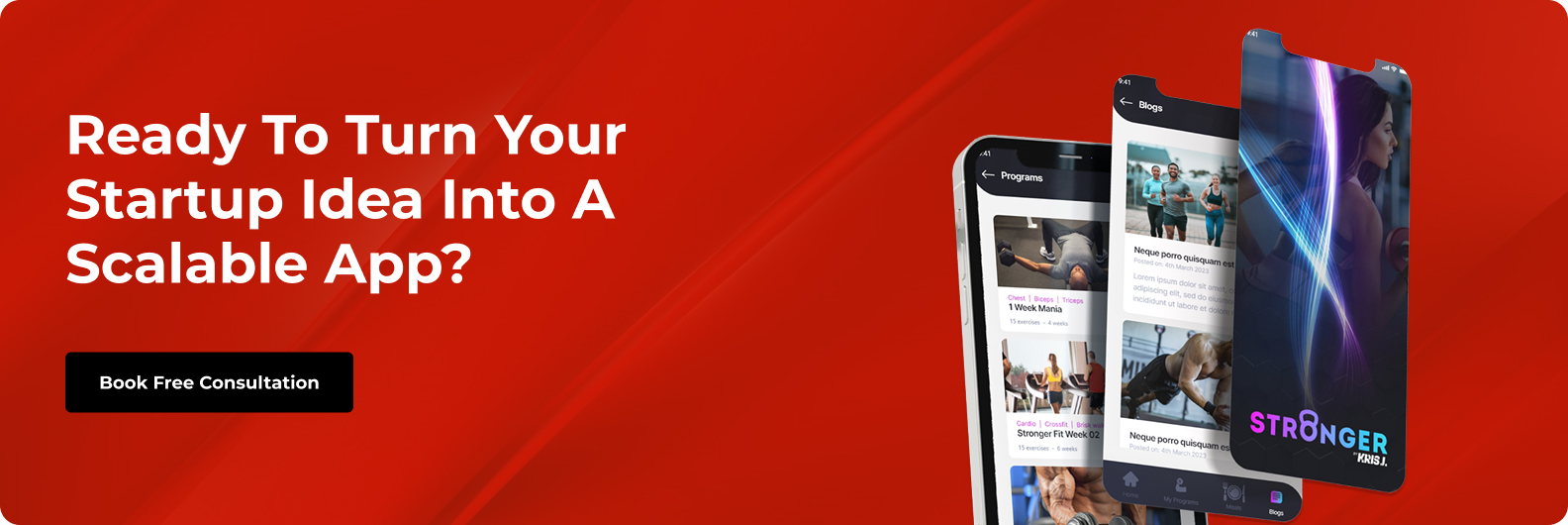
Frequently Asked Questions
How long does it take to develop a startup app?
For most startups, building a lean MVP takes 3 to 6 months.
The timeline depends on:
- App complexity
- Tech stack
- Team size
At Technbrains, we use agile sprints to launch faster without sacrificing quality — helping startups go from idea to app store-ready within 90–120 days in many cases.
What’s the average ROI on a startup app?
While ROI varies widely, successful startup apps can deliver returns of 3x to 10x initial development costs within the first 1–2 years if they achieve product-market fit.
ROI depends heavily on:
- Monetization strategy (freemium, subscription, ads)
- User retention rates
- Speed of scaling and marketing efforts
What’s better – iOS or Android first?
It depends on your target market:
- iOS first: Best for targeting premium users (higher income, US/Western Europe markets).
- Android first: Best for mass adoption (Asia, Africa, South America) and larger global reach.
At Technbrains, we often recommend cross-platform app development (using Flutter or React Native) to launch on both iOS and Android faster and more affordably — ideal for startups aiming for maximum reach.


